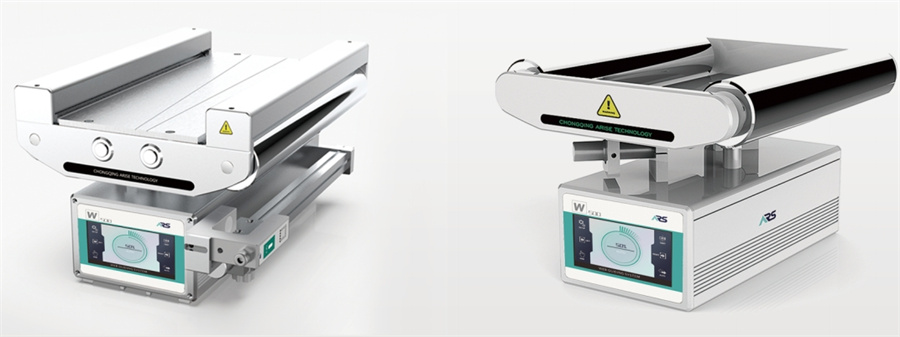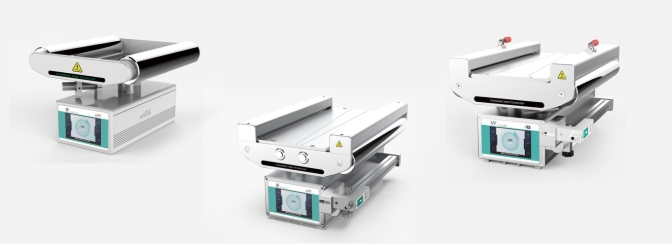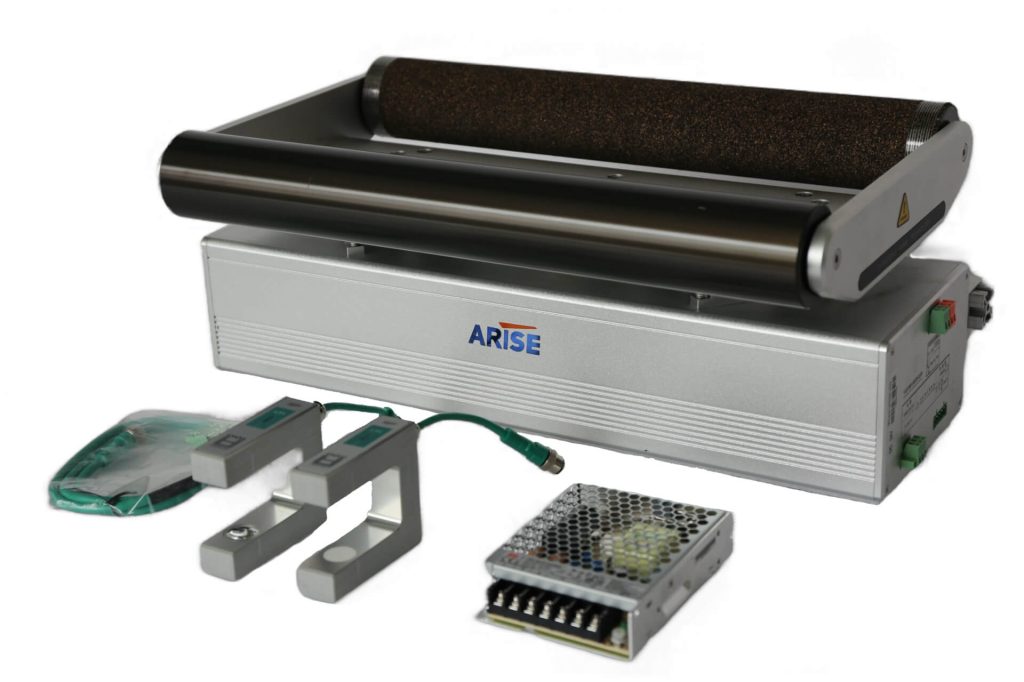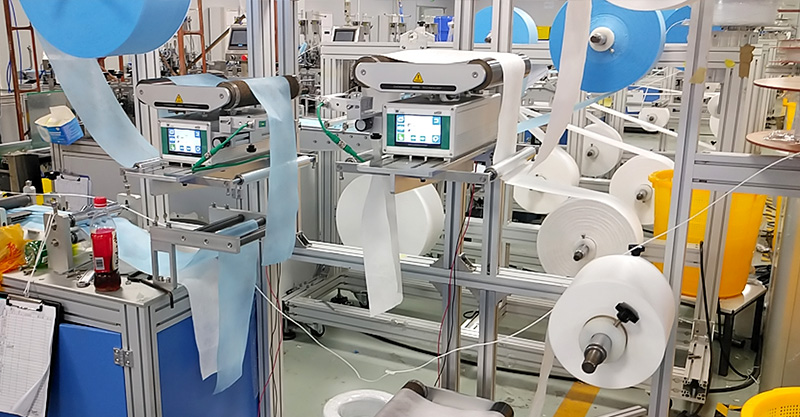How to Integrate Web Guiding Systems with Production Lines
Web guiding systems are essential in industries where materials like paper, plastic film, textiles, and metals are processed in continuous rolls, commonly referred to as webs. Integrating these systems with production lines can lead to improved product quality, reduced waste, and increased operational efficiency. This article explores the integration of web guiding system equipment with production lines, highlighting its benefits, challenges, and best practices.

Understanding Web Guiding Systems
Web guiding systems are designed to keep the moving web properly aligned during various stages of production. They detect any deviation from the desired path and make real-time adjustments to correct the alignment.

Key Components of A Web Guiding System
This chart provides a comprehensive overview of the key components and functionalities of web guiding system equipment, highlighting their roles in maintaining precise web alignment and ensuring efficient production processes.
| Component | Function | Details |
| Sensors | Detect the position of the moving web | Types: Infrared, ultrasonic, and optical sensorsPlacement: Positioned along the web to continuously monitor alignment |
| Controllers | Process data from sensors and determine necessary adjustments | Types: Analog and digital controllers Functions: Signal processing, decision-making, and control logic |
| Actuators | Implement adjustments to guide the web back to the correct path | Types: Hydraulic, pneumatic, and electric actuatorsActions: Adjust rollers, guides, or other web-handling equipment |
| Guiding Mechanisms | Direct the web in response to actuator movements | Types: Steering rolls, pivot guides, and displacement guidesPurpose: Physically correct web alignment |
| Power Supply | Provide necessary power to sensors, controllers, and actuators | Types: Electric, battery, or pneumatic powerConsiderations: Ensure stable and reliable power supply |
| Feedback Systems | Provide real-time data on web position and guide system performance | Components: Integrated with sensors and controllersPurpose: Enable continuous monitoring and adjustments |
| User Interface | Allow operators to interact with the web guiding system, monitor performance, and adjust settings | Types: Control panels, touchscreens, and software interfaces Features: Display real-time data, system status, and alerts |
| Software | Manage and optimize the web guiding process through advanced algorithms and data analysis | Capabilities: Data logging, performance analytics, remote diagnostics, and predictive maintenance |
| Calibration Tools | Ensure precise alignment and operation of sensors, actuators, and controllers | Methods: Manual calibration, automated calibration routinesFrequency: Regular calibration to maintain accuracy |
| Safety Features | Ensure safe operation and prevent accidents during web guiding system use | Components: Emergency stop buttons, safety interlocks, and alarmsCompliance: Meet industry safety standards |

Benefits of Integrating Web Guiding Systems with Production Lines
1. Enhanced Product Quality
- Consistency: Web guiding systems ensure that the web material remains properly aligned, resulting in uniform and consistent product quality.
- Precision: These systems reduce defects such as wrinkles, folds, or uneven edges, ensuring a higher quality of the finished product.
2. Reduced Waste
- Material Savings: By maintaining accurate alignment, web guiding systems minimize material wastage during the production process.
- Operational Efficiency: Fewer defects and misalignments mean less rework and scrap, contributing to overall material savings and efficiency.
3. Increased Production Speed
- Optimized Processes: With the assurance of precise alignment, production lines can operate at higher speeds without compromising on quality.
- Reduced Downtime: Continuous monitoring and automatic adjustments prevent issues that could cause stoppages, thereby enhancing production throughput.
4. Cost Savings
- Lower Scrap Rates: Reduced waste and defects translate directly into cost savings on raw materials.
- Maintenance: Proper alignment and reduced mechanical stress on the equipment lower maintenance costs and extend the lifespan of machinery.
5. Improved Efficiency
- Real-Time Adjustments: Web guiding systems make real-time adjustments to correct any deviations, ensuring smooth and efficient production runs.
- Automation: Automated correction of web alignment reduces the need for manual intervention, thereby improving labor efficiency and reducing the likelihood of human error.
6. Better Control and Monitoring
- Data Analytics: Advanced web guiding systems can collect and analyze data on web alignment, providing valuable insights for optimizing the production process.
- Remote Monitoring: Many modern systems offer remote monitoring capabilities, allowing operators to oversee and adjust processes from a distance.
7. Versatility and Flexibility
- Multiple Applications: Web guiding systems are versatile and can be integrated into various types of production lines, including those processing paper, plastic, textiles, and metals.
- Adaptability: These systems can be easily adjusted to accommodate different materials and production requirements, enhancing the flexibility of the production line.
8. Enhanced Safety
- Reduced Manual Handling: Automated adjustments reduce the need for manual intervention, thereby minimizing the risk of accidents and injuries.
- Compliance: Web guiding systems help ensure compliance with safety standards and regulations, contributing to a safer working environment.
9. Competitive Advantage
- Higher Quality Products: Consistent product quality enhances the company’s reputation and competitiveness in the market.
- Efficiency Gains: The overall improvements in efficiency and cost-effectiveness provide a competitive edge in terms of production capabilities and profitability.

Challenges in Integrating Web Guiding System Equipment With Production Lines
1. Compatibility Issues
- Legacy Systems: Integrating web guiding systems with older, legacy production lines can be problematic due to differences in technology and communication protocols.
- Custom Requirements: Each production line may have unique specifications, requiring tailored integration solutions to ensure compatibility.
2. Calibration and Tuning
- Precision Calibration: Ensuring that sensors, controllers, and actuators are precisely calibrated to the specific production process is critical for accurate web guiding.
- Ongoing Tuning: Regular tuning and adjustments are necessary to maintain optimal performance, which can be time-consuming and require specialized knowledge.
3. Training and Skill Development
- Operator Training: Operators need comprehensive training to understand and effectively use the new systems.
- Technical Expertise: Integrating and troubleshooting web guiding systems require specialized technical skills, which may necessitate additional hiring or training.
4. Initial Costs
- Investment: The initial investment in purchasing and integrating web guiding systems can be significant.
- ROI Calculation: Determining the return on investment requires careful analysis of the expected benefits versus the upfront and ongoing costs.
5. System Complexity
- Integration Complexity: Integrating web guiding systems with existing production lines can be complex, involving coordination between different components and systems.
- Troubleshooting: Diagnosing and fixing issues in a complex integrated system can be challenging and require significant technical expertise.
6. Maintenance and Reliability
- Regular Maintenance: Web guiding systems require regular maintenance to ensure they function correctly, which can add to operational costs and downtime.
- Component Reliability: Ensuring the reliability of all components (sensors, controllers, actuators) is crucial for continuous operation, and failures can lead to production halts.
7. Environmental Factors
- Harsh Conditions: In some industries, environmental factors such as dust, moisture, temperature fluctuations, and corrosive materials can affect the performance and longevity of web guiding systems.
- Protection and Durability: Ensuring that the web guiding equipment is protected and durable enough to withstand the production environment is essential.
8. Data Integration and Management
- Data Compatibility: Integrating data from web guiding systems with existing data management systems can be challenging.
- Real-Time Processing: Ensuring that data is processed and acted upon in real time requires robust and reliable data integration and processing capabilities.
9. Customization and Flexibility
- Tailored Solutions: Customizing web guiding systems to fit the specific needs of different production lines can be resource-intensive.
- Scalability: Ensuring that the system can be easily scaled or modified to accommodate changes in production requirements can be challenging.
10. Safety and Compliance
- Safety Standards: Ensuring that the integrated system meets all relevant safety standards and regulations is crucial to avoid legal and operational issues.
- Risk of Integration Errors: Integration errors can lead to safety risks, which must be carefully managed through rigorous testing and validation.

Best Practices for Integrating Web Guiding System Equipment with Production Lines
1. Comprehensive Planning
Assessment
- Conduct a thorough assessment of the existing production line to identify specific needs and potential challenges.
- Evaluate the types of materials being processed and the specific alignment requirements.
Customization
- Design the integration process to meet the unique specifications of your production line.
- Consider future scalability and flexibility in the design to accommodate potential changes in production requirements.
2. Collaboration with Experts
Vendor Support
- Work closely with web guiding system vendors to ensure proper installation and integration.
- Leverage the vendor’s expertise for training, support, and troubleshooting.
Consultants
- Consider hiring consultants with experience in web guiding system integration for complex projects.
- Engage with industry experts to gain insights and best practices tailored to your specific needs.
3. Pilot Testing
Prototype Integration
- Implement a pilot test on a small scale to evaluate the system’s performance and make necessary adjustments.
- Use a controlled environment to identify and address potential issues before full-scale integration.
Feedback Loop
- Collect feedback from the pilot test to refine the system and integration process.
- Continuously monitor performance and make iterative improvements based on real-world data.
4. Training and Skill Development
Operator Training
- Provide comprehensive training for operators to ensure they understand how to use and maintain the systems.
- Include hands-on training sessions and detailed manuals to enhance operator competence.
Ongoing Education
- Encourage continuous learning and skill development to keep up with technological advancements.
- Offer refresher courses and advanced training modules to ensure sustained proficiency.
5. Regular Maintenance and Monitoring
Scheduled Maintenance
- Implement a regular maintenance schedule to keep the systems in optimal condition.
- Perform routine checks on sensors, controllers, and actuators to ensure accurate alignment and performance.
Real-Time Monitoring
- Use real-time monitoring tools to track system performance and address issues promptly.
- Implement predictive maintenance techniques to anticipate and prevent potential failures.
6. Data Integration and Management
Data Compatibility
- Ensure that data from web guiding systems is compatible with existing data management systems.
- Use standardized data formats and protocols to facilitate seamless integration.
Real-Time Processing
- Implement robust data processing capabilities to enable real-time adjustments and decision-making.
- Use advanced analytics to gain insights into system performance and identify areas for improvement.
7. Safety and Compliance
Safety Protocols
- Establish and enforce strict safety protocols to protect personnel and equipment during the integration process.
- Conduct regular safety audits and inspections to identify and address potential hazards.
Regulatory Compliance
- Ensure compliance with relevant safety standards and regulations to avoid legal and operational issues.
- Stay updated on industry standards and incorporate best practices to maintain a safe working environment.
8. Continuous Improvement
Feedback and Lessons Learned
- Collect feedback and lessons learned from each integration project to identify areas for improvement.
- Implement a continuous improvement process that incorporates feedback and adopts innovative solutions.
Research and Development
- Invest in research and development to explore new technologies and techniques for web guiding systems.
- Collaborate with industry partners, academic institutions, and research organizations to drive innovation and share knowledge.

Conclusion
The integration of web guide systems with production lines offers substantial benefits, including enhanced product quality, reduced waste, increased production speed, and cost savings. However, successful integration requires careful planning, addressing compatibility issues, precise calibration, and ongoing operator training. Through following best practices and leveraging the expertise of vendors and consultants, manufacturers can effectively integrate web guiding equipment into their production lines, leading to significant improvements in efficiency and quality.


